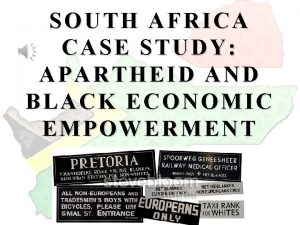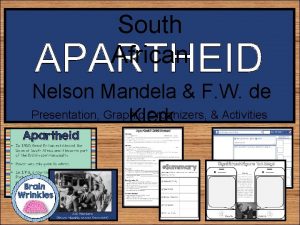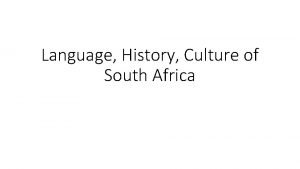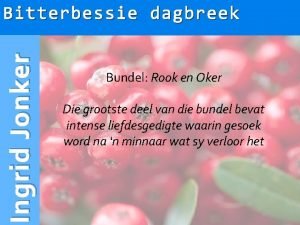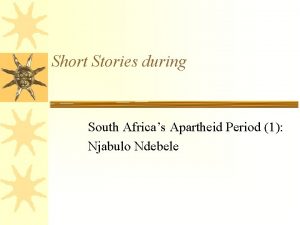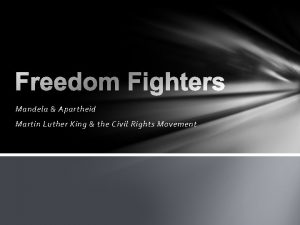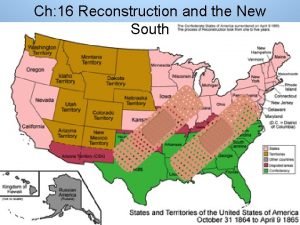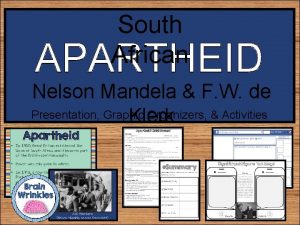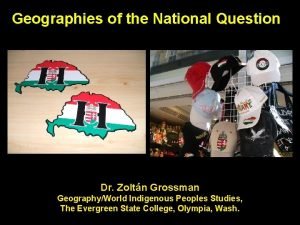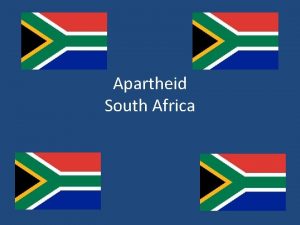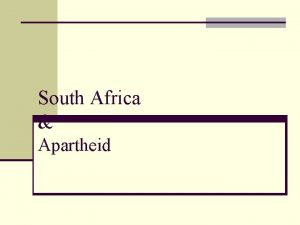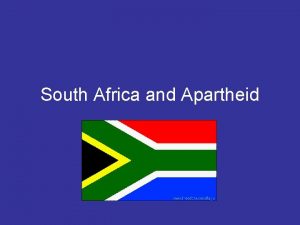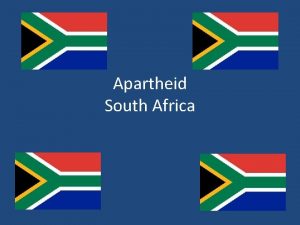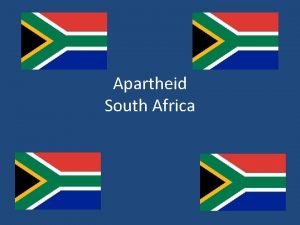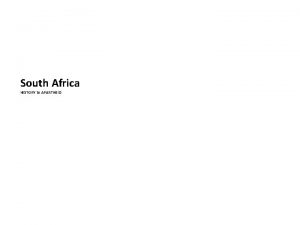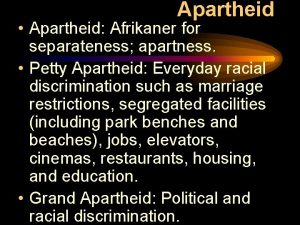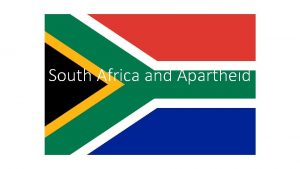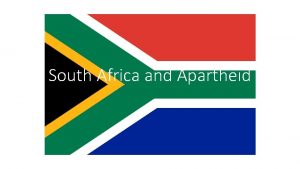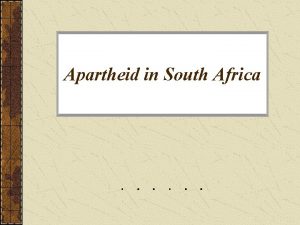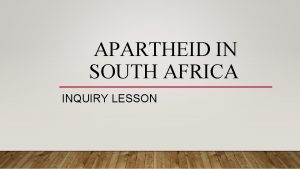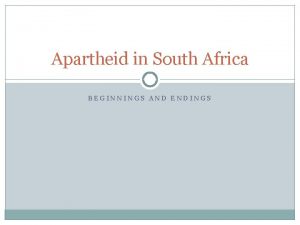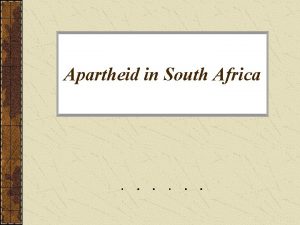Language History Culture of South Africa Jonker Apartheid














- Slides: 14

Language, History, Culture of South Africa

Jonker – Apartheid ( o video) • Jonker died before this cruel system ended. • Nelson Mandela, a supporter of her work, read from “The child is not dead” when he opened the first South African democratic parliament on May 24, 1994. • Nelson Mandela dedicated his life to opposing the apartheid system. • In 1994 he became the first black president of South Africa. • O video

“I thought of what the child might have been had he been allowed to live. ” • March 1960 riots at Sharpeville--a child was shot and killed in his mother’s arms at Nyanga. • First stanza – what’s the feeling/theme here? • Second stanza? • Third stanza?

“I thought of what the child might have been had he been allowed to live. ” • March 1960 riots at Sharpeville--a child was shot and killed in his mother’s arms at Nyanga. • First stanza – what’s the feeling/theme here? • Rage against racial injustice • Second stanza? • Oppression - child is fighting back in “righteousness and blood. ” • Third stanza? • oppressed people who live in an unjust political and social system, emphasizing their resistance to injustice.

• Last stanza? What is the child doing? • Last two lines of the poem?

• Last stanza? What is the child doing? • child still lives. • Haunts his oppressors—the solders and the lawmakers in their political assemblies • Peers into “the hearts of mothers. ” • Last two lines of the poem? • the child is victorious • The child is now a “giant” who can walk the world freely, “without a pass. ” • reference to the passbook laws that were finally struck down. The oppressed South Africans, now free, no longer have to carry passes.

“The child is not dead” is also published under another title: “The child who was shot dead by soldiers at Nyanga. ” Which title do you prefer? Why?

What is free verse? • Why might a poet use free verse?

What is free verse? • Why might a poet use free verse? • closer to spoken speech, you feel as if Jonker is speaking directly to you • doesn’t use punctuation marks to end sentences • spitting out her rage in one prolonged breath.

Imagery – feeling of being under attack in the second stanza • the child shouts “the breath of righteousness and blood” as he struggles “in the streets of his embattled pride. ” • Here it’s his pride that’s “embattled” or under siege. • The repetition of the phrase “The child lifts his fists” shows that he’s constantly fighting back against his oppressor. • What’s her tone? • Enraged but also believes in change

• 4 th stanza: • The child is the dark shadow of the soldiers on guard with rifles Saracens and batons the child is present at all assemblies and law-givings the child peers through the windows of houses and into the hearts of mothers this child who just wanted to play in the sun at Nyanga is everywhere the child grown to a man treks through all Africa • What do you see here? • The child, the future of South Africa, is always present, although the soldiers don’t or won’t see him in the shadows.

What happens in the last two lines? • For the first time in the poem Jonker says “this child, ” not “the child. ” She’s using language carefully to refer specifically to the child who was killed in his mother’s arms at Nyanga during the riots in March 1960. • Is there a shift in her tone? • child is now a man who “treks through all Africa. ” Think about the connotation of treks. It implies a long, difficult journey

the child grown into a giant journeys through the whole world Without a pass • What is the metaphor? • What’s the connotation of a giant? • “without a pass” – don’t have to carry “pass books” anymore • —free from repression and discrimination.

Ignore the short answer question: In your opinion, did Ingrid Jonker use language effectively to create a sense of a particular time and place in “The child is not dead”?
 How was apartheid practiced in south africa
How was apartheid practiced in south africa Apartheid south africa
Apartheid south africa Apartheid cloze notes
Apartheid cloze notes Apartheid
Apartheid What is the history of the community
What is the history of the community Commisuroplasty
Commisuroplasty Bitterbessie dagbreek
Bitterbessie dagbreek Stylfigure en beeldspraak
Stylfigure en beeldspraak What was apartheid
What was apartheid The prophetess by njabulo ndebele analysis
The prophetess by njabulo ndebele analysis Apartheid
Apartheid Martin luther king apartheid
Martin luther king apartheid Apartheid vs jim crow venn diagram
Apartheid vs jim crow venn diagram Apartheid comprehension check answer key
Apartheid comprehension check answer key Apartheid
Apartheid
